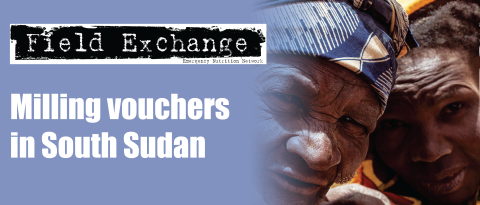Response to reviewers
By Mark Myatt, Corresponding author
We thank the reviewers for taking the time to review our proposed IYCF indicators. We think it important to respond to the ‘more important limitations’ with our proposed IYCF indicators that are presented in the commentary.
We take issue with the term ‘standard methodology’. This is too broad a term to describe a form used to collect data. If we focus on the data collection form for the WHO indicator set we find that no strict standardisation is proposed. The key WHO document provide an ‘example questionnaire’ and guidance for ‘adapting’ and ‘simplifying the questionnaire’1. This guidance explicitly allows the removal of questions related to liquids, reducing the number of food groups used to collect dietary diversity data, and reducing the number of indicators calculable from the collected data. Our simplified questionnaire was created by following this guidance. We believe our data collection form is minimal but standard.
The proposed indicators can be calculated from the simplified dataset and from the full WHO dataset. This allows ‘calibration’ in the sense that the proposed indicators could be applied to existing IYCF datasets in order to create revised baselines for interventions. It also allows ‘validation’ in the sense of comparing estimates of indicator levels from the two indicator sets. Such a validation exercise has not been done but would, we believe, be very easy to do. We suggest that this be done before accepting the reviewers' assertions regarding bias.
The issue of bias is not straightforward. It is very unlikely that the ‘standard’ questionnaire is without bias. This means that a validation by within-survey comparison is limited to answering the question as to whether two methods exhibit similar biases rather than which method best describes reality. When devising indicators to measure change (e.g. for monitoring and evaluation of prog- rammes) bias is usually a secondary issue compared to issues relating to practicality. There is nothing (e.g.) to stop a scale that consistently returns a weight measurement 200 grams above the true weight (i.e. a 200 gram upward bias) from being used to accurately assess changes in weight. Such a scale might be better at this task than a more accurate but less precise scale.
Accuracy and precision are only two of the attributes that are commonly used to assess the utility of methods used in epidemiological surveys. When designing the pro- posed IYCF indicators we used the framework of Sackett & Holland, modified to include criteria identified by Beaton & Bengoa and by Jelliffe & Jelliffe to extend the basic framework to include criteria specific to nutrition assessment2,3,4. In this (generally accepted) framework, simplicity, acceptability, cost, objectivity, being quantitative, and age-independence are considered highly important attributes with precision, accuracy, sensitivity, and predictive value being considered of lesser importance. The use of this framework informed the design of the proposed indicators.
We are unsure why the reviewers believe that the short form dietary diversity question set will impair precision. We selected the seven item score because validation work by IFPRI and FANTA showed this to be the most precise method.
Other (possibly ‘key’) dimensions of IYCF can be derived from the short form dataset. It is possible (e.g.) to estimate the proportion of children aged between six months and two years who consume foods likely to be rich in vitamin A. calcium, and iron. A longer (e.g. ten item) form might do this better and could be used. Data on liquids could also be collected. We urge that this data be integrated in the indicator structure as (e.g.) part of the ICFI score so as to avoid replicating the confusing proliferation of indicators that we had hoped to address when designing the proposed IYCF indicators.
We believe it is clear from the article and illustrations that the hierarchy of main with diagnostic indicators is to be used when designing, monitoring, and evaluating programmes. We also think the article explores sample size issues more thoroughly than the reviewers allow.
1WHO, IFPRI, UC Davis, FANTA, USAID, UNICEF, Indicators for assessing infant and young child feeding practices : Part 2 - Measurement, Geneva, World Health Organization, 2010
2Sackett DL, Holland WW, Controversy in the detection of disease, Lancet, 1975;25:357-359
3Beaton GH, Bengoa JM, Practical population indicators of health and nutrition, In: Nutrition and Preventive Medicine, G Beaton and JM Bengoa (Eds.), Monograph Series 62, Geneva. World Health Organisation, 1976:500-19
4Jelliffe EFP, Jelliffe DB, The arm circumference as a public health index of protein-calorie malnutrition of early childhood, J Trop Pediatr, 1969;15: 179-192


